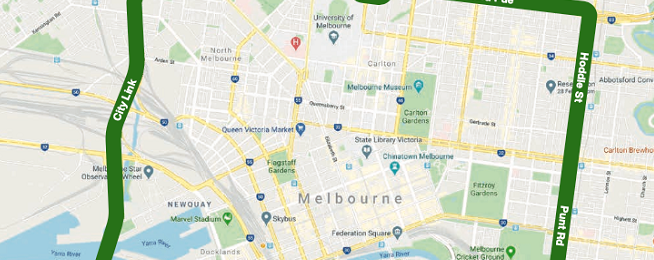The State Government’s key transport advisory body, Infrastructure Victoria, has called for major reforms to car parking so more bike lanes can be built.
The move is one of a slew of recommendations related to the introduction of transport network pricing, a system where we pay variable rates for transport depending on time and place.
Existing charges such as motor registration would be abolished and replaced by charges on all travel by all modes, based on variables such as time of day and distance of trip.
The new charging model is being tried in various forms around the world and has proved successful, gradually gaining support from the public and politicians.
The proposed reforms are outlined in a new report, Good Move – Fixing Transport Congestion.
Infrastructure Victoria says the time has come to trial the system in Victoria because continued investment in transport, though essential, cannot keep pace with growth, and greater congestion is on the horizon unless we change the way we travel.
Consequently, one initiative is for all car parking to be priced.
"Driving and parking go hand in hand,” the report says.
"Most parking across greater Melbourne is currently free, with 96% of trips resulting in free parking. This abundance of cheap parking encourages people to drive.
"The road space taken up by parked cars could be put to better use, by providing space for free-flowing traffic, bus, tram or bicycle lanes and wider footpaths.
"To get the most out of our transport system, we need a new approach, where all parking must be priced, along with roads and public transport."
The report also recommends the government conducts a full scale trial of cordon charging in inner Melbourne and other congestion hotspots.
It says research indicate that traffic into Melbourne and Sydney CBDs could drop up to 40 per cent with a cordon charge such as is now imposed in London, and which is coming to New York City.
"If an inner Melbourne cordon is perceived as successful, it would certainly be worthwhile exploring if there are other regularly heavily congested areas to which cordon-style pricing could be applied, the report says.
"This could include around shopping centres or crossings of rivers or other natural barriers for which there are few alternatives.
"These would be intermediate steps towards pricing congestion wherever it occurs (and not pricing congestion where it never occurs – which would be most of Victoria)."
Click here to see an online version of the Infrastructure Victoria report
Become our friend
Find out more about Bicycle Network and support us in making it easier for people to ride bikes.


